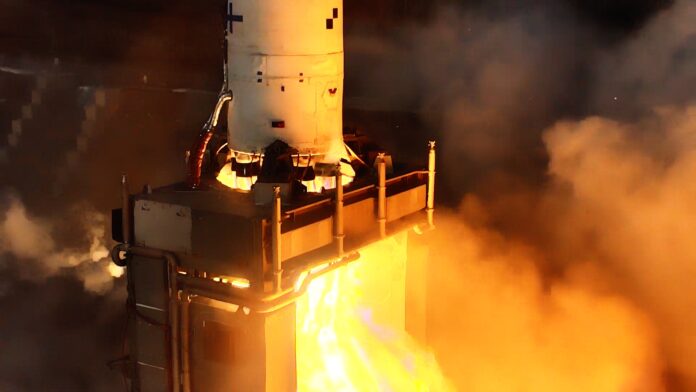ABL Space Systems reported that its second RS1 rocket was destroyed after a fire broke out during a static-fire test, caused by leaking fuel that couldn’t be put out.
The company shared details on August 26 about what happened on July 19, just before the rocket’s second planned launch from Pacific Space Complex in Alaska.
According to ABL, the E2 engines in the RS1 rocket’s first stage were ignited, but the test stopped after half a second due to low pressure from a faulty sensor.
Even though the engines shut down, a fire started at the base of the rocket because of fuel leaks. This fire couldn’t be put out by the pad’s water or gas systems, so they began to remove the rocket’s fuel.
The launch pad didn’t have a built-in water supply and relied on mobile tanks, which ran out of water 11.5 minutes after ignition. This made the fire spread more, damaging many pad systems and stopping the fuel removal and telemetry.
“At T+ 23:24, the fire exceeded the thermal capability of the structure and RS1 buckled to the pad,” the company said. Most electrical and plumbing connections were damaged, though the launch mount and other equipment survived.
An investigation showed that the engines with leaks had significant erosion, suggesting combustion instability. The company thinks this might have been triggered by differences in the propellant feed system.
In over 300 tests of the E2 engine, this problem appeared only once before, for a different reason. They plan to run more tests in California to confirm the cause and explore other possibilities.
No timeline was given for when the next launch attempt might happen. Repairs are being made to the ground support equipment in Long Beach, while production of the next RS1 rocket is ongoing.
This incident comes 18 months after ABL’s first RS1 launch, which failed 10 seconds after liftoff due to a fire in the rocket’s engine compartment, leading to a redesign of the launch mount.
The RS1 destroyed in July was an updated version with 20% more thrust and propellant, and it had two additional engines compared to the original model.
